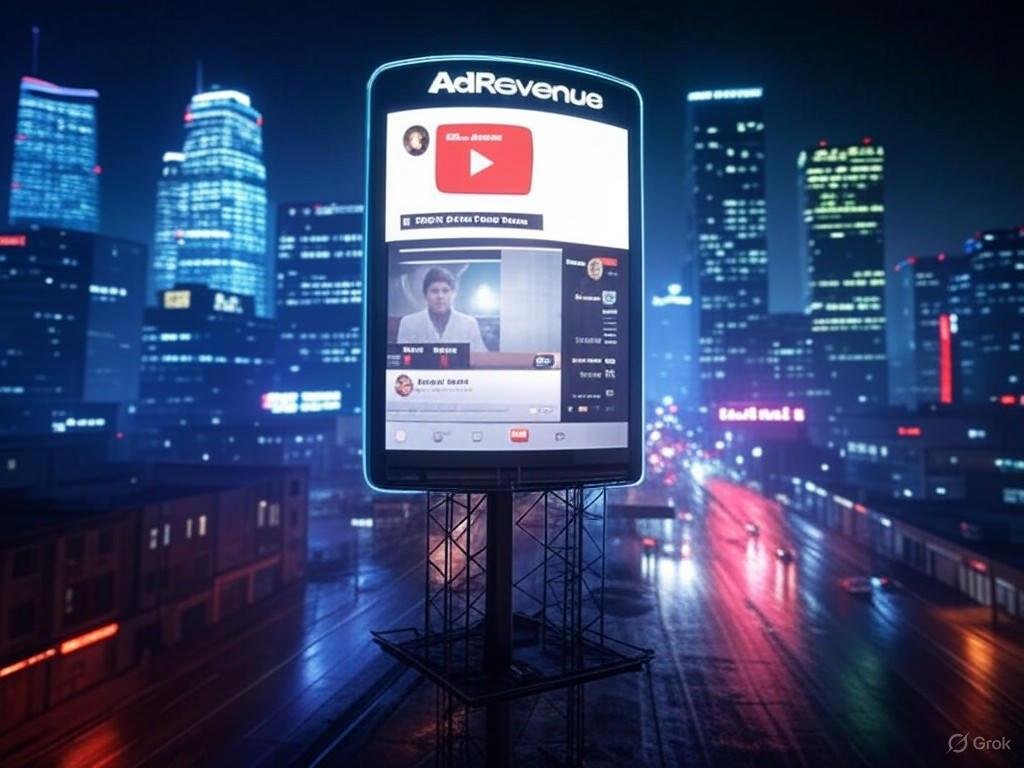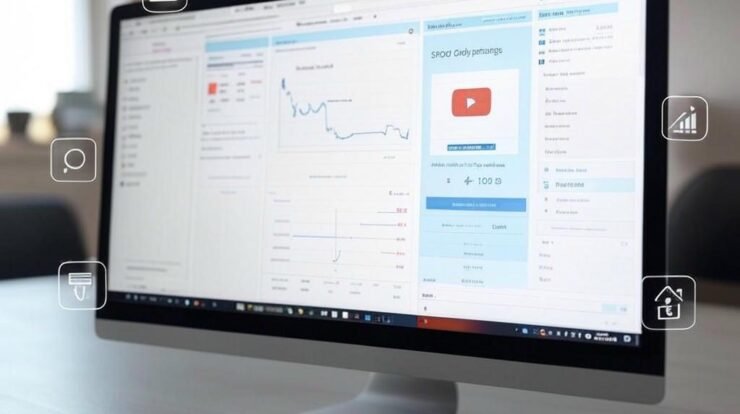YouTube has evolved from a platform for sharing funny cat videos to a global powerhouse where creators can build thriving careers. With over 2.5 billion monthly active users, it’s no wonder why so many people are asking, “How can you make money on YouTube?” The answer isn’t just about posting videos and hoping for the best. It’s about strategy, persistence, and understanding the platform’s opportunities. As someone who’s spent years studying digital content creation and working with creators, I’m here to break down the practical steps, insider tips, and proven methods to turn your YouTube channel into a money-making machine. Whether you’re a beginner or a seasoned creator, this guide will walk you through the process with actionable advice.
Understanding the YouTube Money-Making Landscape

Before diving into the how-to, let’s set the stage. YouTube offers multiple ways to generate income, but success doesn’t happen overnight. It requires a mix of creativity, consistency, and business savvy. The platform’s monetization options have expanded over the years, giving creators more ways to earn than ever before. From ad revenue to sponsorships, memberships to merchandise, the opportunities are vast—but each comes with its own challenges and requirements.
To make money on YouTube, you need to think like both a content creator and an entrepreneur. The platform rewards those who understand their audience, optimize their content, and diversify their income streams. Let’s explore the key ways to earn money and how to set yourself up for success.
1. Join the YouTube Partner Program for Ad Revenue
The most well-known way to make money on YouTube is through the YouTube Partner Program (YPP). This program allows creators to earn a share of the revenue from ads displayed on their videos. However, getting accepted into the YPP isn’t as simple as uploading a few videos. Here’s what you need to know:
Eligibility Requirements
To qualify for the YPP, your channel must meet these thresholds:
- 1,000 subscribers: Building a loyal audience is the first step.
- 4,000 watch hours: You need 4,000 public watch hours in the past 12 months. Private or unlisted videos don’t count.
- Ad-friendly content: Your videos must comply with YouTube’s Community Guidelines and Advertiser-Friendly Guidelines. Avoid controversial topics, explicit content, or anything that might scare off advertisers.
- Linked AdSense account: You’ll need an AdSense account to receive payments.
Tips to Reach YPP Goals
- Focus on watch time: Create longer videos (8–15 minutes) that keep viewers engaged. Tutorials, vlogs, or storytelling formats tend to rack up watch hours faster than short clips.
- Optimize for search: Use tools like TubeBuddy or VidIQ to find high-traffic keywords related to your niche. For example, if you’re in the fitness space, target phrases like “how to lose weight fast” or “best home workouts.”
- Engage your audience: Encourage likes, comments, and subscriptions in every video. A strong call-to-action (CTA) can boost engagement and help you hit that 1,000-subscriber mark.
Once accepted into the YPP, you’ll earn money based on CPM (cost per mille, or cost per 1,000 views) and RPM (revenue per mille, after YouTube’s cut). CPM varies widely by niche—finance and tech channels often earn $10–$20 per 1,000 views, while lifestyle or entertainment might see $1–$5. To maximize ad revenue, create content that appeals to high-paying advertisers and target audiences in countries like the U.S., Canada, or Australia, where ad rates are higher.
Read more: Unveiling the Truth – My In-Depth AICoaches Review and Experience
2. Leverage Sponsorships and Brand Deals
Sponsorships are where the real money often lies. Brands are eager to partner with creators who have engaged audiences, even if your channel is relatively small. A micro-influencer with 10,000 subscribers can land deals if their audience is highly targeted and engaged.
How to Attract Sponsors
- Build a niche audience: Brands prefer creators with a specific focus, like gaming, beauty, or personal finance. A clear niche makes your channel more appealing to relevant companies.
- Create a media kit: This is a professional document showcasing your channel’s stats (views, subscribers, demographics), content style, and past collaborations. Tools like Canva can help you design a sleek media kit.
- Reach out proactively: Don’t wait for brands to find you. Pitch to companies that align with your content. For example, if you run a cooking channel, contact kitchenware brands or food subscription services.
- Join influencer platforms: Sites like FameBit, Grapevine, or Upfluence connect creators with brands. These platforms often require a minimum subscriber count (e.g., 5,000–10,000), but they simplify the process.
Negotiating Deals
When working with brands, don’t undersell yourself. Research typical rates: micro-influencers might charge $100–$500 per video, while creators with 100,000+ subscribers can command $1,000–$10,000 or more. Always negotiate terms clearly, including deliverables (e.g., a dedicated video or a 30-second mention) and payment timelines. Be transparent with your audience about sponsored content to maintain trust.
3. Monetize with Channel Memberships
Channel memberships allow your most loyal fans to pay a monthly fee for exclusive perks, like badges, emojis, or members-only videos. This is a great way to create recurring revenue, especially if you have a dedicated community.
Setting Up Memberships
- Eligibility: You need to be in the YPP and have at least 1,000 subscribers (or 30,000 for gaming channels).
- Perks: Offer value that justifies the cost. Examples include behind-the-scenes content, Q&A livestreams, or exclusive tutorials. For instance, a fitness creator might offer members-only workout plans.
- Pricing: YouTube lets you set tiers (e.g., $4.99, $9.99, $14.99). Start with one or two tiers to keep it simple, and adjust based on feedback.
Tips for Success
- Promote memberships during videos and livestreams. Highlight the value of joining, like “Get exclusive tips you won’t find anywhere else!”
- Engage with members regularly to make them feel valued. Respond to their comments or host members-only events.
- Experiment with perks to see what resonates. For example, a gaming channel might offer early access to new gameplay videos.
Read more: 10 Unique Ways to Make Money at Home – Unleash Your Inner Entrepreneur
4. Sell Your Own Products or Merchandise
Selling merchandise or digital products is a powerful way to diversify your income. YouTube’s built-in merch shelf lets you showcase products directly below your videos, making it easy for fans to buy.
Product Ideas
- Physical merch: T-shirts, hoodies, mugs, or stickers with your channel’s logo or catchphrase. Use print-on-demand services like Teespring or Printful to avoid upfront costs.
- Digital products: E-books, courses, or templates related to your niche. A travel vlogger might sell a guide on “How to Plan a Budget Trip to Europe,” while a tech creator could offer a course on coding.
- Services: If you’re an expert in your field, offer consulting or coaching. For example, a business channel could provide one-on-one mentoring sessions.
How to Promote Products
- Create videos showcasing your products. A “lookbook” video for your merch or a tutorial using your digital product can drive sales.
- Pin a comment with a link to your store in every video.
- Use YouTube’s end screens and cards to direct viewers to your product pages.
5. Crowdfunding and Fan Support
Platforms like Patreon, Buy Me a Coffee, or YouTube’s own Super Thanks feature let fans support you directly. This is especially useful for creators who don’t yet qualify for the YPP or want to fund specific projects.
Crowdfunding Strategies
- Patreon: Offer tiered rewards, like early video access or shoutouts, for monthly pledges. For example, a music channel might give patrons exclusive covers or songwriting tips.
- Super Thanks: Viewers can donate during videos or livestreams. Encourage this by acknowledging donors on-screen or in your community tab.
- Kickstarter or GoFundMe: Use these for one-off projects, like funding a documentary series or upgrading your equipment.
Building a Loyal Fanbase
Crowdfunding works best when your audience feels connected to you. Share your journey, be authentic, and engage with viewers through comments and livestreams. A personal touch goes a long way.
Read more: How to Make Money on Poshmark: A Blogger’s Guide to Turning Your Closet into Cash
6. Affiliate Marketing for Passive Income

Affiliate marketing involves promoting products or services and earning a commission for each sale made through your unique links. It’s a low-effort way to monetize, especially for beginners.
Getting Started with Affiliate Marketing
- Join affiliate programs: Amazon Associates, ClickBank, or niche-specific programs (e.g., fitness equipment or software) are great starting points.
- Choose relevant products: Promote items your audience will find useful. A tech channel might link to gadgets, while a beauty creator could recommend skincare products.
- Disclose affiliations: Always state that your links are affiliate links to comply with YouTube and FTC guidelines.
Maximizing Affiliate Earnings
- Include affiliate links in your video descriptions and pin them in comments.
- Create “best of” or review videos, like “Top 5 Budget Cameras for YouTubers,” with links to each product.
- Track performance to see which products resonate with your audience, then double down on those.
7. License Your Content
If you create high-quality videos, you can license them to media outlets, brands, or other creators. For example, a travel vlogger’s stunning drone footage might be licensed to a tourism board or a stock video platform like Pond5 or Shutterstock.
How to License Content
- Protect your work: Watermark videos or use a Creative Commons license to control usage.
- Reach out to buyers: Contact brands, news outlets, or production companies that might need your footage.
- Join marketplaces: Platforms like BlackBox or Newsflare connect creators with buyers.
Optimizing Your Channel for Growth
To make money on YouTube, you need views, subscribers, and engagement. Here are some expert tips to grow your channel:
Content Strategy
- Find your niche: Focus on a specific topic to attract a dedicated audience. Broad niches like “lifestyle” are harder to stand out in than specific ones like “minimalist living” or “retro gaming.”
- Post consistently: Aim for at least one video per week. Use a content calendar to stay organized.
- Create evergreen content: Videos like tutorials or how-to guides continue to attract views over time, unlike trendy content that fades quickly.
SEO and Discoverability
- Optimize titles and descriptions: Include your target keyword (e.g., “how to make money on YouTube”) naturally in your title, description, and tags. For example, “How to Earn a Living on YouTube in 2025” is specific and clickable.
- Craft compelling thumbnails: Use bold colors, clear text, and expressive faces to grab attention. Tools like Canva or Photoshop make this easy.
- Analyze performance: Use YouTube Analytics to see which videos drive the most traffic and replicate their success.
Audience Engagement
- Respond to comments: Engaging with viewers builds loyalty and boosts your video’s algorithm ranking.
- Host livestreams: Live sessions are a great way to connect with fans and encourage Super Chats or memberships.
- Collaborate with other creators: Partnering with creators in your niche exposes your channel to new audiences.
Common Pitfalls to Avoid
Making money on YouTube isn’t without challenges. Here are some mistakes to steer clear of:
- Chasing trends blindly: Trendy content might get quick views, but it often has a short shelf life. Balance trends with evergreen content.
- Ignoring analytics: YouTube Analytics provides insights into what’s working. If a video underperforms, study why and adjust.
- Neglecting quality: Poor audio, shaky footage, or sloppy editing can turn viewers away. Invest in a decent microphone and basic editing software like DaVinci Resolve or Adobe Premiere.
- Burning out: Consistency is key, but don’t overwork yourself. Plan breaks to avoid creative fatigue.
Scaling Your Income
Once your channel is monetized, focus on scaling. Diversify your income streams to reduce reliance on any single source. For example, combine ad revenue with sponsorships and merch sales. As your audience grows, negotiate higher rates for brand deals and explore new opportunities, like speaking engagements or creating a podcast.
You can also repurpose your YouTube content for other platforms. Turn your videos into blog posts, social media clips, or even an e-book. This maximizes your reach and income potential.
The Long Game: Building a Sustainable Career
Making money on YouTube is a marathon, not a sprint. Success takes time, but with the right approach, it’s achievable. Focus on creating valuable content, engaging your audience, and diversifying your revenue streams. Stay updated on YouTube’s algorithm changes and industry trends to keep your channel competitive.
By combining creativity with strategy, you can turn your passion for content creation into a profitable venture. Whether you’re aiming for a side hustle or a full-time career, YouTube offers endless possibilities for those willing to put in the work. Start small, stay consistent, and watch your channel—and your bank account—grow.






